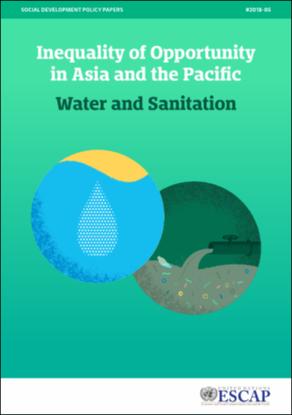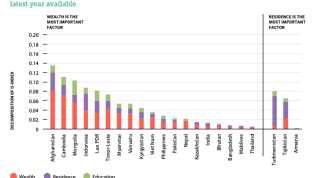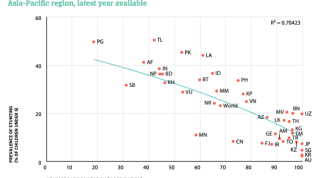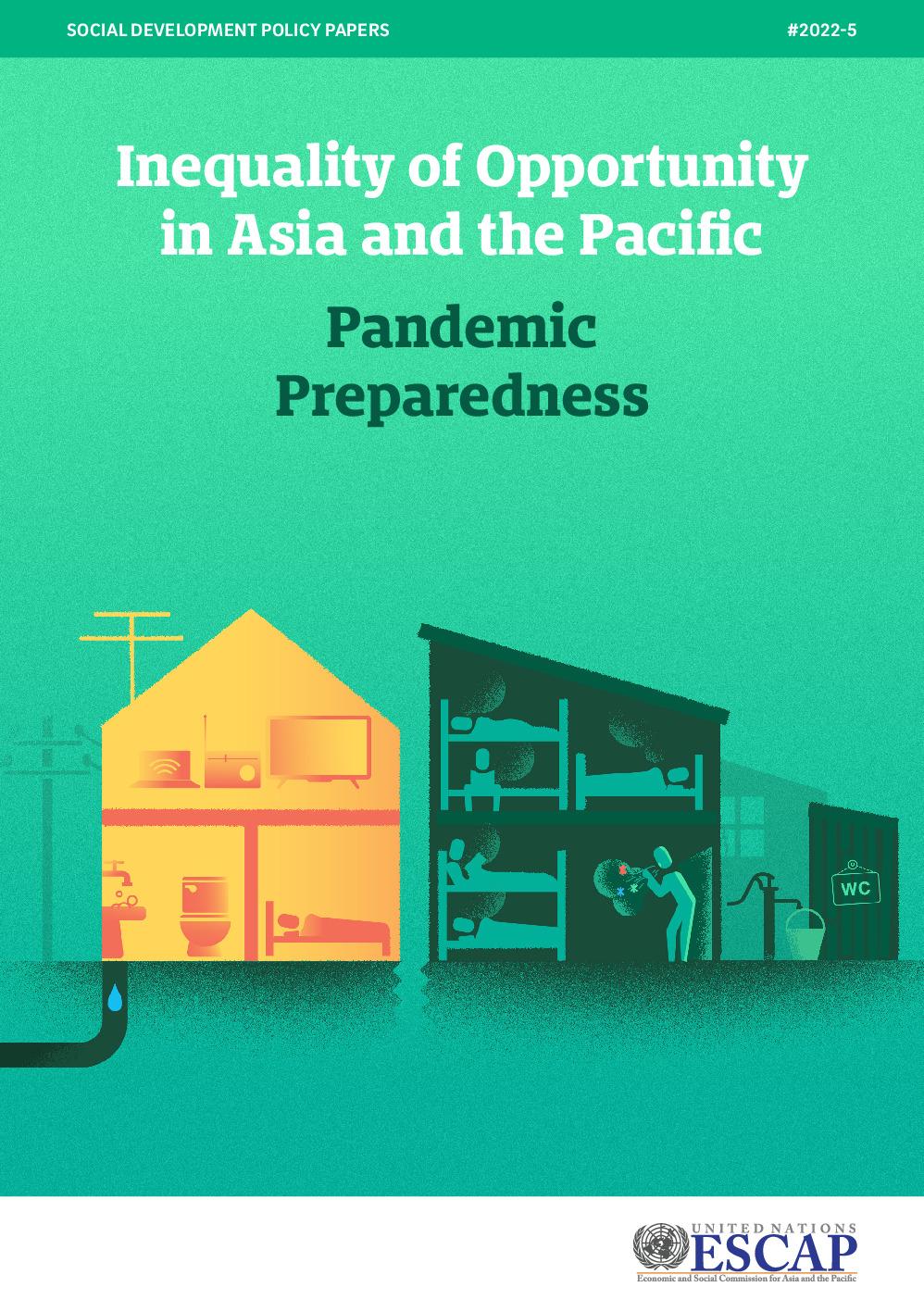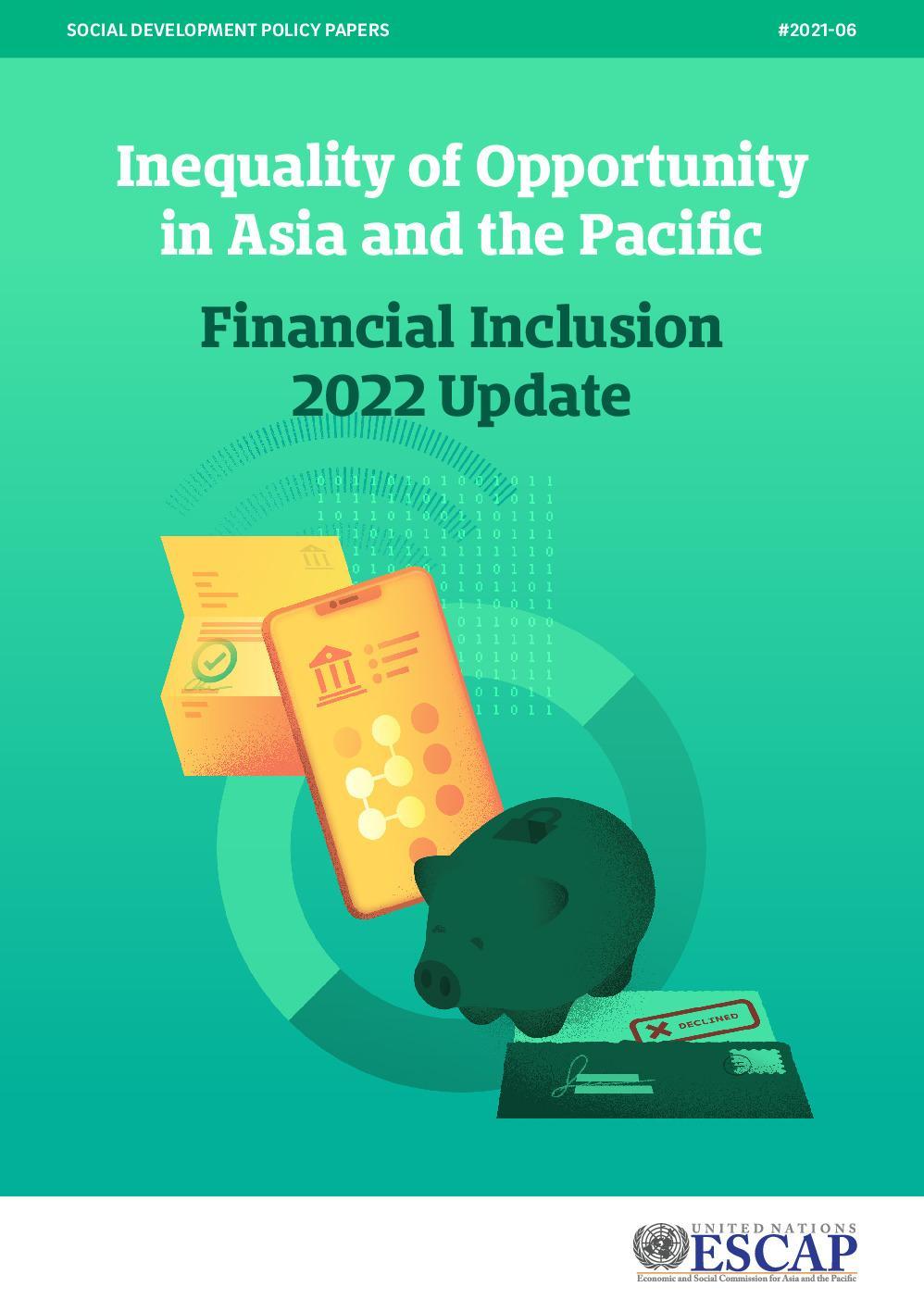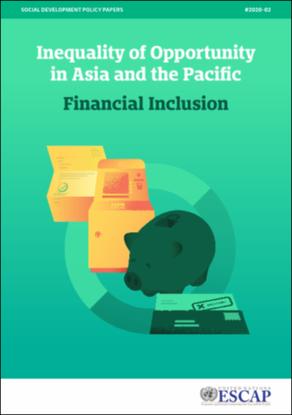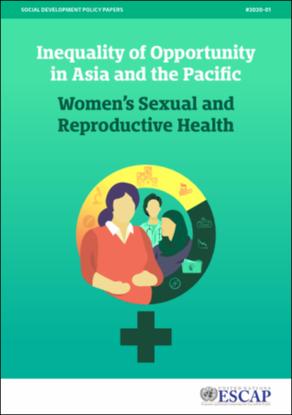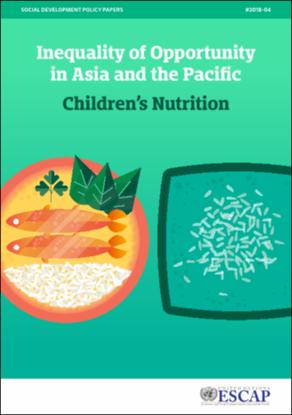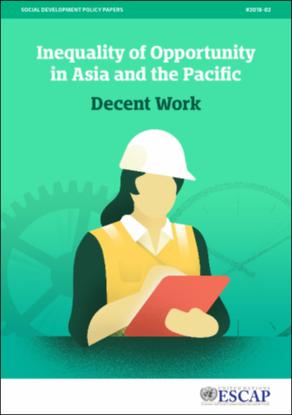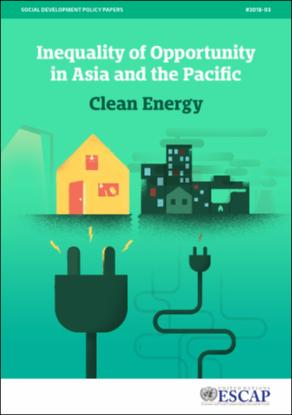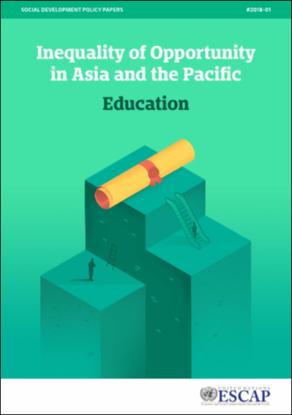Water and sanitation : inequality of opportunity in Asia and the Pacific
Policy Brief
01 January 2018
• Introduction and scope
• Why does inequality in access to water and sanitation matter?
• A new approach to identifying the furthest behind.
• Who are those furthest behind?
• Understanding overall inequality in access to clean water and basic sanitation;
• Does ethnicity matter for determining the furthest behind?
• Recommendations for closing the gaps.
• Annex
The ESCAP Inequality of Opportunity papers place men and women at the heart of sustainable and inclusive development. The papers do so by identifying seven areas where inequality jeopardizes a person’s prospects, namely: education; women’s access to health care; children’s nutrition; decent work; basic water and sanitation; access to clean energy; and financial inclusion. Each of these opportunities are covered by specific commitments outlined in the 2030 Agenda for Sustainable Development and addressed in a separate thematic report covering 22 countries throughout Asia and the Pacific.
The fifth in the series of Inequality of Opportunity in Asia and the Pacific policy papers (following Education, Decent Work, Clean Energy and Children’s Nutrition) , this paper highlights why it is important to reduce inequalities in access to clean water and basic sanitation. It also introduces new ways of analyzing surveys to measure inequality of opportunity and to identify the shared circumstances of those “furthest behind” in 22 ESCAP member States.
